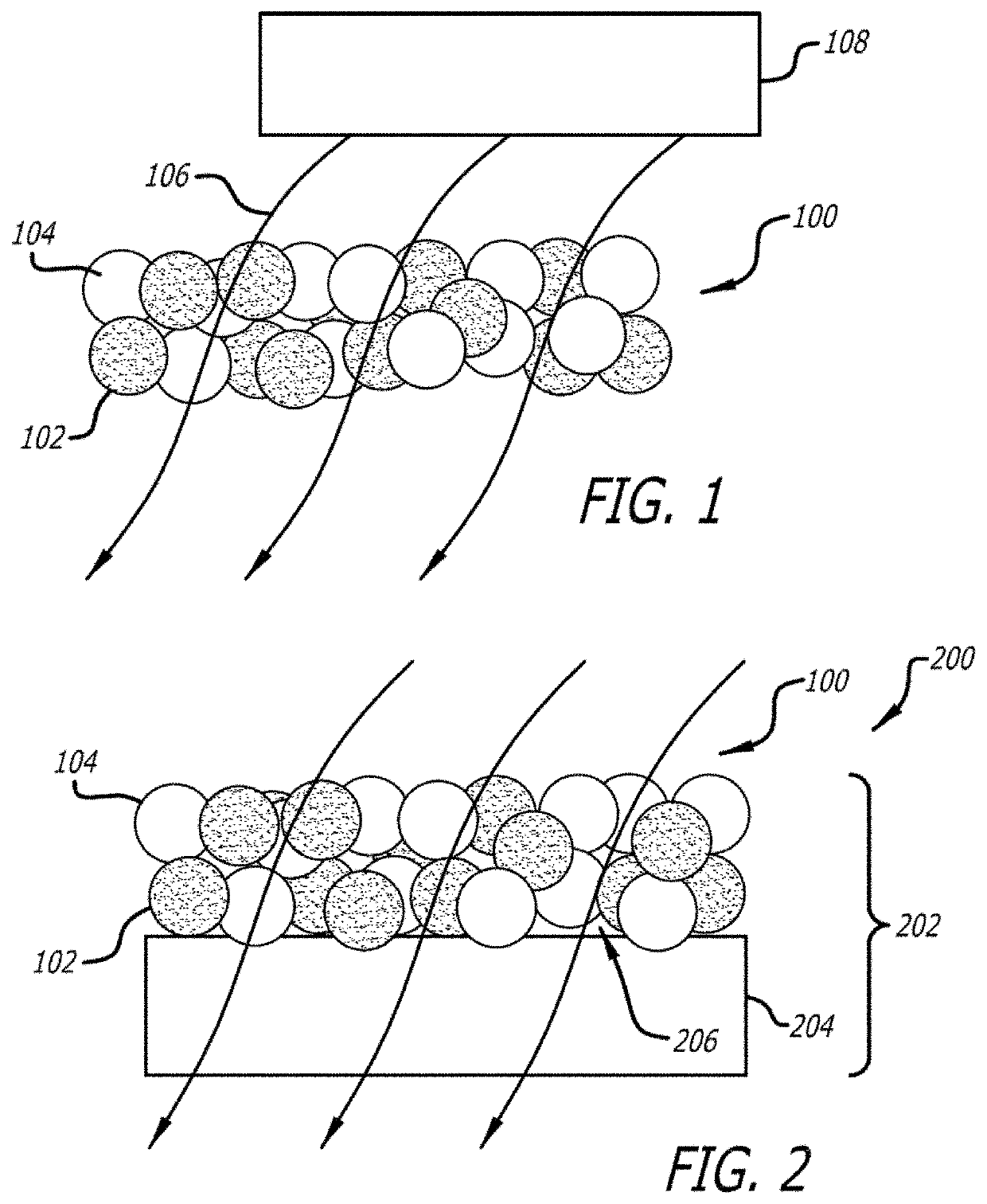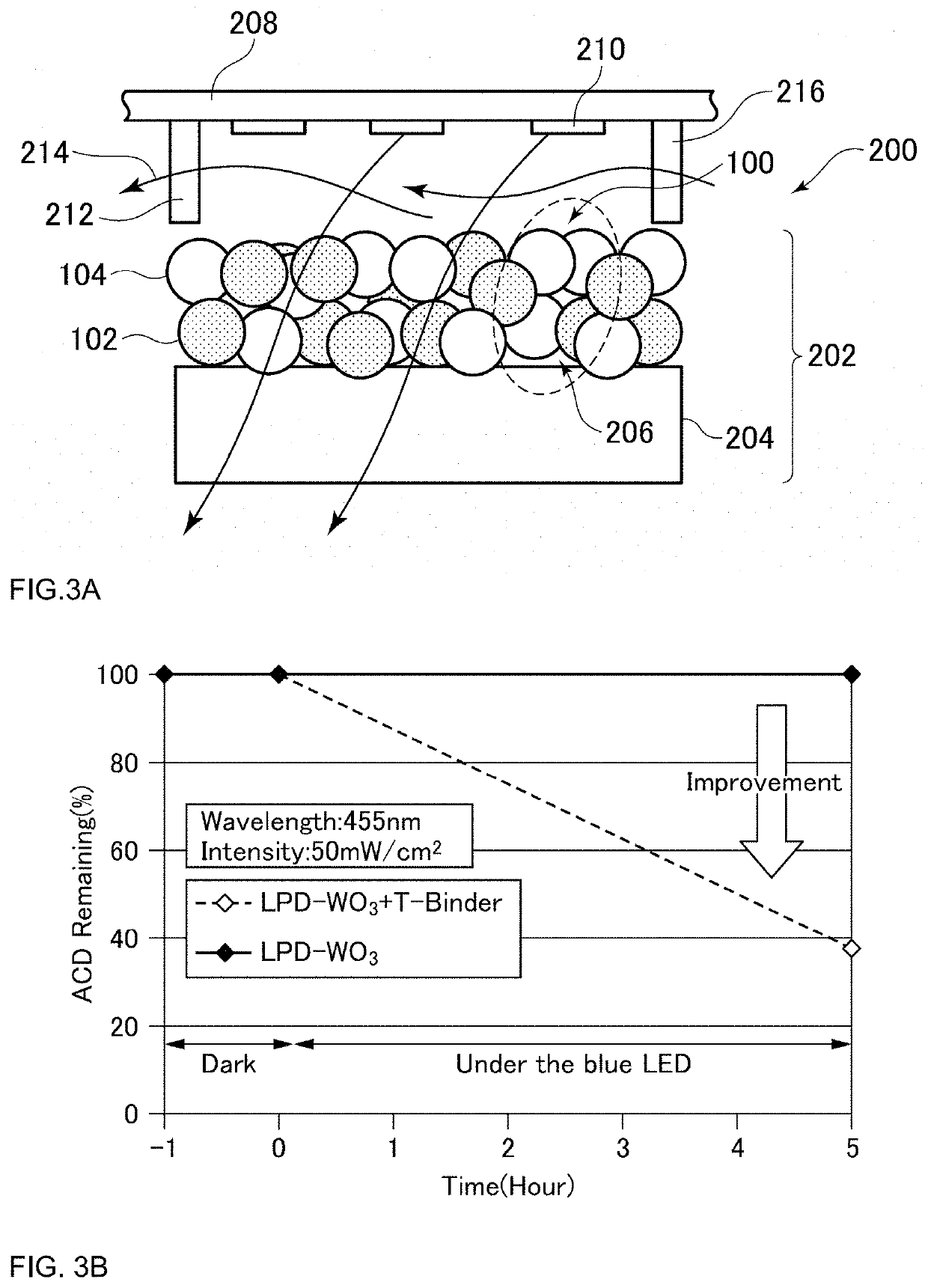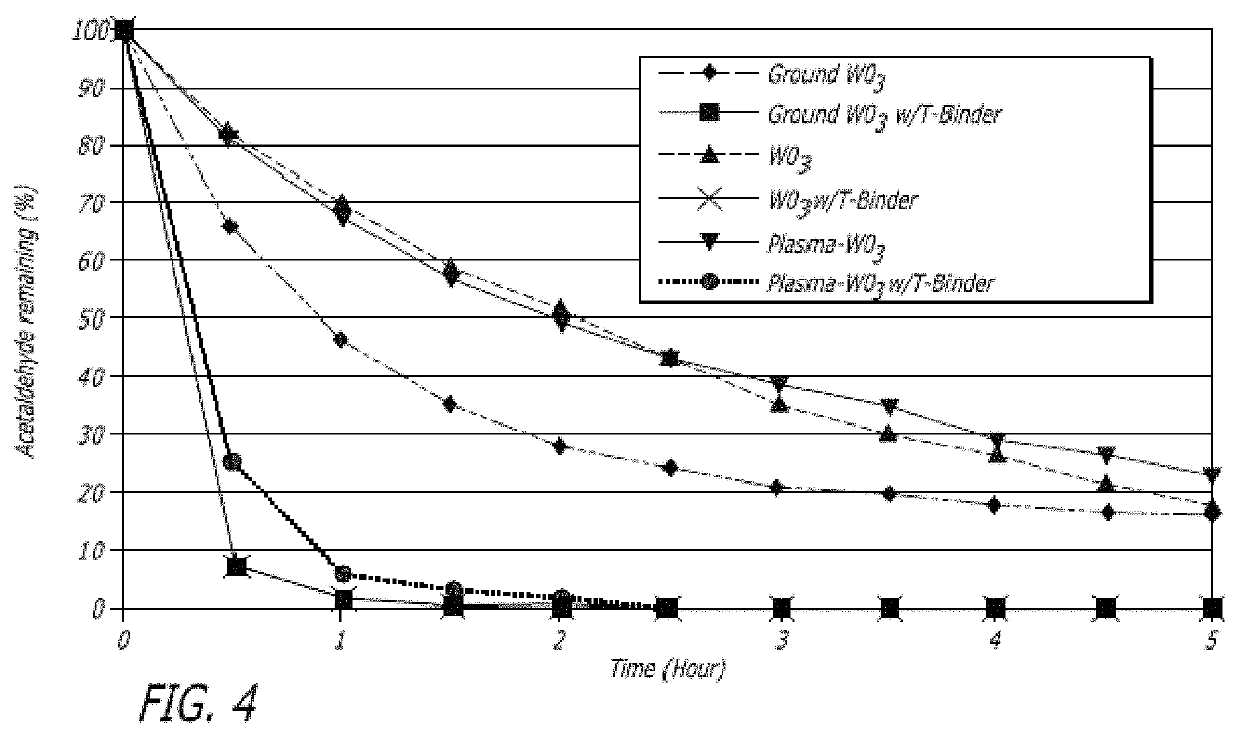Filter element for decomposing contaminants, system for decomposing contaminants and method using the system
a filter element and contaminants technology, applied in the field of photocatalytic elements, can solve the problems of inability of conventional filter units to remove materials that exist in gas phases, harmful gases and malodorant components, adsorption capability, etc., and achieve the effect of extending the stock life of ethylene-sensitive plants
- Summary
- Abstract
- Description
- Claims
- Application Information
AI Technical Summary
Benefits of technology
Problems solved by technology
Method used
Image
Examples
example 1
[0223]WO3 photocatalyst (200 mg), as prepared according to the method described earlier in this disclosure, was added to water. The resulting dispersion was then added to 740 mg of CeO2 sol (Nissan Chemical America, Houston, Tex., USA, NanoUse CE-20B). The mole ratio of CeO2 and WO3 was chosen to be 1:1 (50 molar % to 50 molar %). Then a sufficient amount of RO (reverse osmosis treated) water (800 mg) was added to the resulting dispersion in order to make a coating solution which is about 20 wt % solid materials in water. The resulting dispersion was homogenized using an ultrasonic homogenizer. A glass substrate (50 mm×75 mm) was coated with the prepared resultant by using a spin coater (1200 rpm / 40 sec). The coated substrate was heated for about 2 minutes at about 120° C. The resulting coated substrate was transparent (about 86% at about 555 nm). Photocatalytic activity was determined by monitoring the acetaldehyde degradation ratio to about 81% after 1 hour of blue light-emitting ...
example 2
[0224]Coated substrate 2 was made in a similar manner to Example 1, except that SiO2 sol (Nissan Chemical SNOWTEX O, 258 mg) was added instead of CeO2 sol. The resulting coated substrate was transparent (90% at about 555 nm). Photocatalytic activity as determined by the acetaldehyde degradation ratio was about 50% after irradiation under conditions similar to Example 1.
example 3
[0225]Coated substrate 3 was made in a similar manner to Example 1, except that SiO2 sol (Nissan-Chemical SNOWTEX 20L, 258 mg) was added instead of CeO2 sol. The resulting obtained substrate was transparent (91% at 555 nm). Photocatalytic activity as determined by the acetaldehyde degradation ratio was about 67% after irradiation under conditions similar to Example 1.
PUM
| Property | Measurement | Unit |
|---|---|---|
| wavelength | aaaaa | aaaaa |
| visible wavelengths | aaaaa | aaaaa |
| band gap | aaaaa | aaaaa |
Abstract
Description
Claims
Application Information
 Login to View More
Login to View More - R&D
- Intellectual Property
- Life Sciences
- Materials
- Tech Scout
- Unparalleled Data Quality
- Higher Quality Content
- 60% Fewer Hallucinations
Browse by: Latest US Patents, China's latest patents, Technical Efficacy Thesaurus, Application Domain, Technology Topic, Popular Technical Reports.
© 2025 PatSnap. All rights reserved.Legal|Privacy policy|Modern Slavery Act Transparency Statement|Sitemap|About US| Contact US: help@patsnap.com



